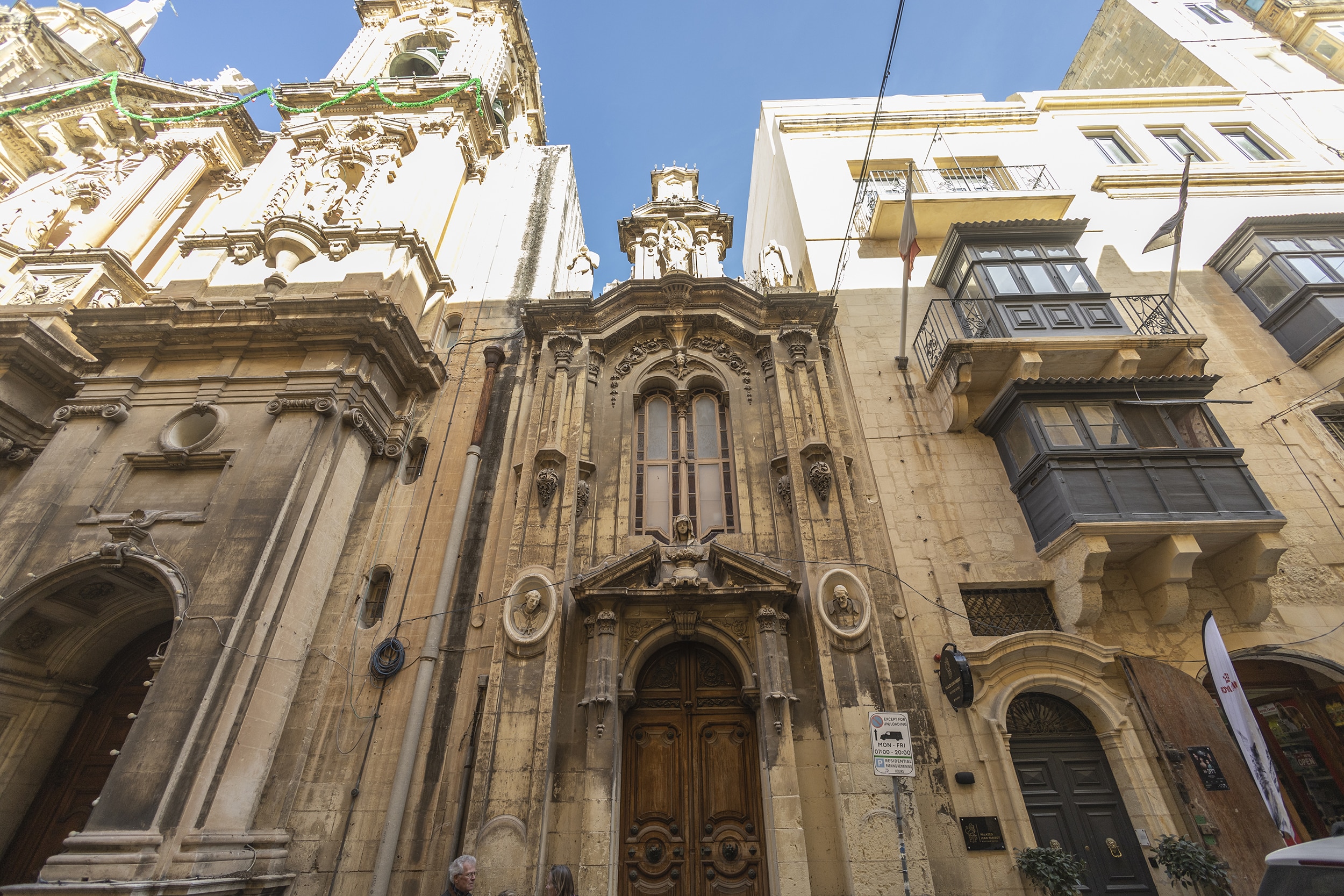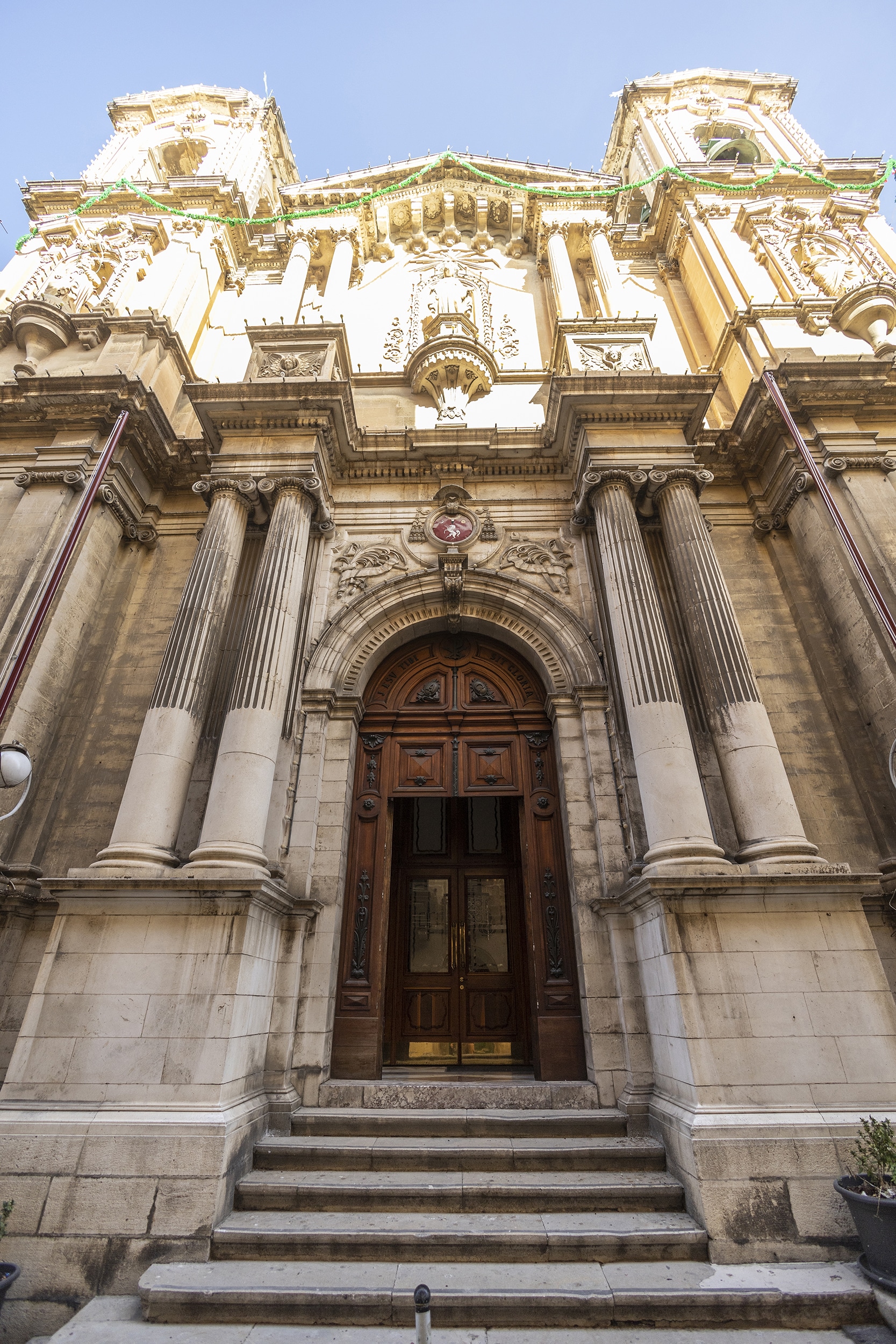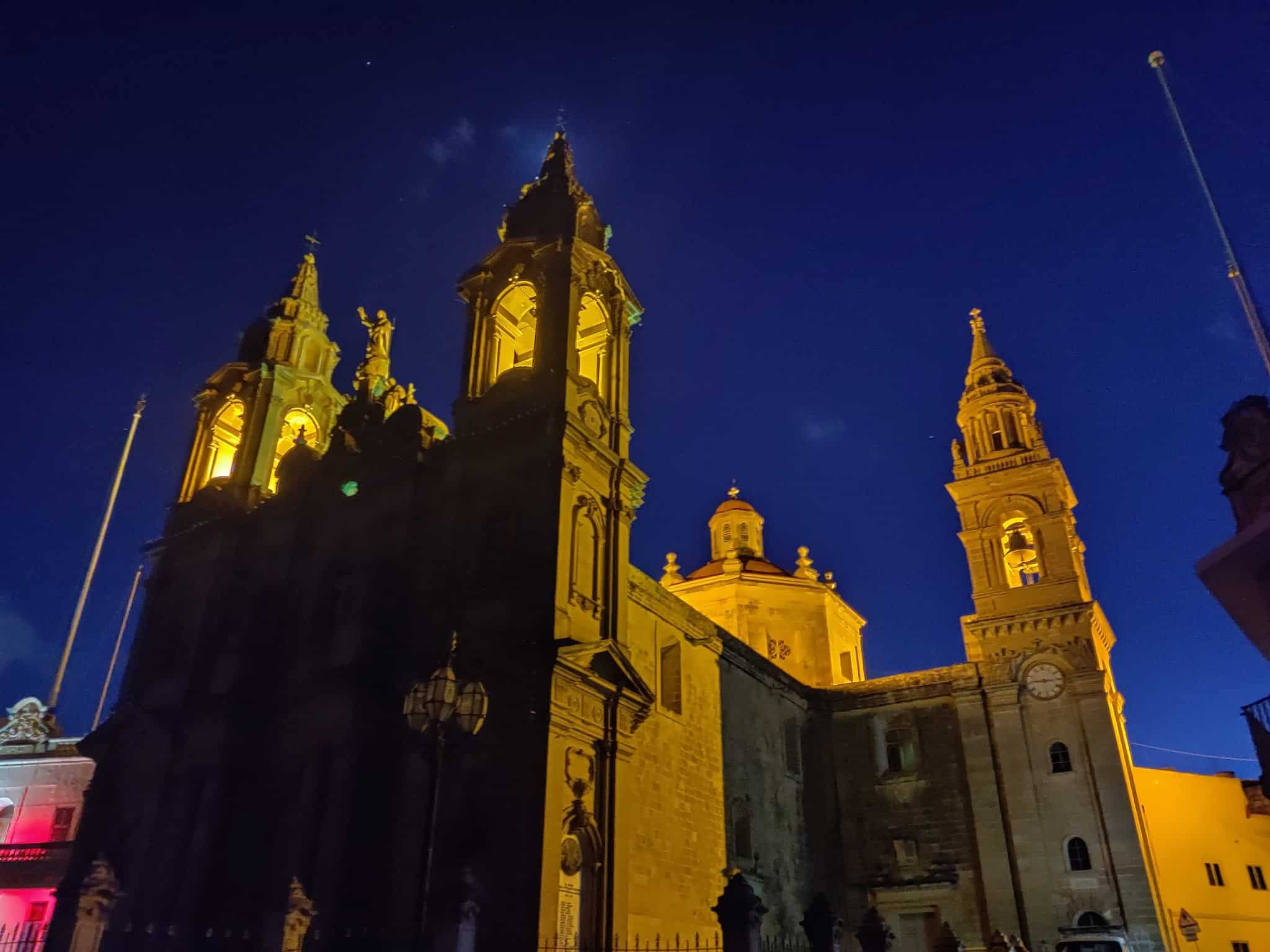Parish Church of St Paul's Shipwreck Chapel of St Theresa of Avila
The chapel of St Theresa of Avila was added to the Parish church of St Paul Shipwreck after 1730. The chapel is seen to the left-hand side of the high altar. This is another chapel that belongs to the Confraternity of Our Lady of Charity, together with the Chapel of St Joseph, the Chapel of Our Lady of Charity and the Oratory of Charity which is adjacent to the nave. The titular altarpiece of this chapel is embellished with refined baroque sculptures by Rocco Buhagiar (1723-1805). The titular painting St Theresa of Avila is surrounded by a frontispiece which is decorated with large scrolls. It is crowned by a sculpture in gilt stucco of divine rays of light (the gloria) held by putti.
HISTORICAL DETAIL:
The chapel of St Theresa of Avila is adorned by a silver oil lamp which was donated to the Confraternity of St Helen, by Grand Master Ramon Perellos y Roccaful (1697-1720). The magistral coat-of-arms are embossed on one side. St Helen is the patron saint of the Silversmiths’ Guild, which was absorbed by the Confraternity of Charity in 1903. The oil lamp is installed in the chapel on the feast of St Paul Shipwreck, and on the titular feast day of St Theresa of Avila.
The chapel is entrusted to the Confraternity of The Blessed Virgin of Charity. On the sides of the chapel are two niches. On the right-hand side niche is the statue of Our Lady of Charity sculpted in wooden and painted in ornate gilt colours. On the left-hand side are several fine examples of ecclesiastical silverware such as reliquaries decorated in precious stones, as well as a set of Stations of the Cross in mother-of-pearl.
HIGHLIGHT:
The chapel of St Theresa of Avila is adorned by a silver oil lamp which was donated to the Confraternity of St Helen, by Grand Master Ramon Perellos y Roccaful (1697-1720). The magistral coat-of-arms are embossed on one side. St Helen is the patron saint of the Silversmiths’ Guild, which was absorbed by the Confraternity of Charity in 1903. The oil lamp is installed in the chapel on the feast of St Paul Shipwreck, and on the titular feast day of St Theresa of Avila.
TITULAR PAINTING:
The titular painting of the chapel of St Theresa of Avila was executed in the Baroque style by the Maltese artist Enrico Regnaud (1692-1764), some years after 1730 when the chapel was added to the church. The painting is in oil on canvas and is surrounded by a carved and gilt reredos. St Theresa of Avila is portrayed in the titular painting, as she experiences a mystic vision. The Spanish Carmelite nun was active in the reform of the Order and established numerous convents in Spain which restored the stricter discipline of the original Rule. To her side is St Francis of Paola bearing the Staff of Charity, thereby denoting the Confraternity of Our Lady of Charity whose members were responsible for the chapel.
St Theresa of Avila is portrayed in the titular painting, as she experiences a mystic vision. To her side is St Francis of Paola bearing the Staff of Charity, thereby denoting the Confraternity of Our Lady of Charity whose members were responsible for the chapel. The altarpiece is flanked by two smaller paintings of other monastic saints, St Mary Magdalene de’ Pazzi on the left and St John of the Cross on the right, both looking towards the patron saint. St Mary Magdalene de’ Pazzi had mystical visions of the Virgin Mary. St John of the Cross was a theologian and poet who helped St Theresa of Avila in her work of reform. The three saints represented in this chapel are all from the Theresian Monastic Order of the Discalced Carmelites.
Four floral decorations in oil on canvas are affixed to the corner pendentives beneath the dome, each surrounded by a sculpted frame. In still life paintings, flowers symbolize the evanescence of human life though in a religious context they also represent Hope.
PROJECT INFORMATION:
The European Union co-funded project, focussed on conservation actions to ensure the long-term preservation of this historic chapel in its entirety. The interventions sought to reverse and mitigate deterioration sustained through water ingress, rising damp, humidity, efflorescence, dust and pollutants. This was leading to the loss of the aesthetic qualities of the chapel. These conservation actions are ensuring the long-term protection and enjoyment of this historic chapel in the heart of the community, within the world heritage site of Valletta.
The interventions sought to clean, repair, consolidate and conserve, the deterioration and damage sustained to the pictorial layers, canvas, and the stretcher frames through humidity, efflorescence and insect attack. These conservation actions shall ensure the long-term protection and enjoyment of this artistic heritage lying in the heart of the community, and the world heritage site of Valletta.
VISITORS OPENING HOURS:
Refer to parrocci.knisja.mt/parrocca for full details.
HOW TO ARRIVE:
Refer to Malta Public Transport website: www.publictransport.com.mt






